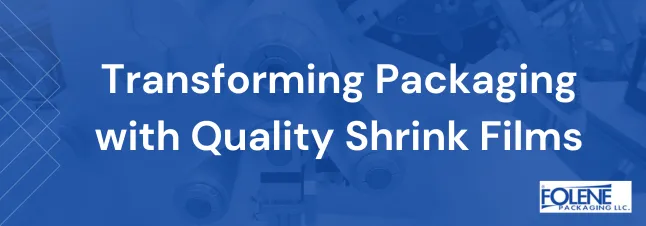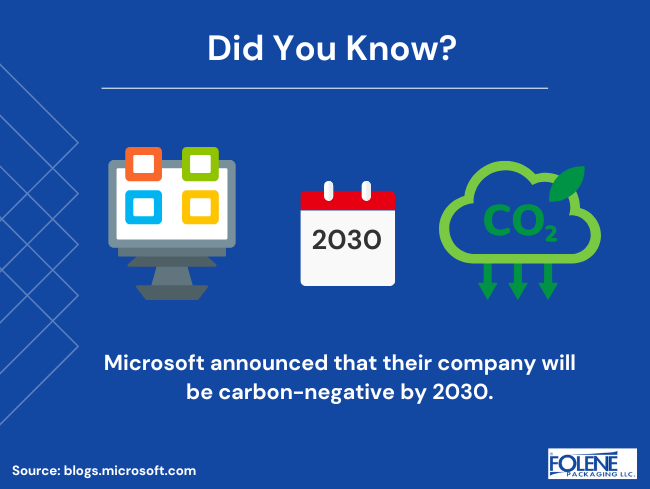
Carbon Neutral Shipping: 4 Business Advantages for Suppliers
Carbon emissions from shipping contribute to climate change and have a significant impact on the environment. The shipping industry is a major contributor to global greenhouse gas emissions, with carbon dioxide being the primary culprit. We can’t stop shipping, so instead, businesses adopt carbon neutral shipping to contribute to the global goal of achieving net-zero emissions by 2050.
Since long-distance shipping is costly and risky and produces high carbon emissions, many suppliers are considering other options. They want to learn about emission reduction strategies and offset carbon production. They are working towards carbon neutral shipping and creating net zero carbon emissions from the shipping aspects of today’s global market and supply chain.
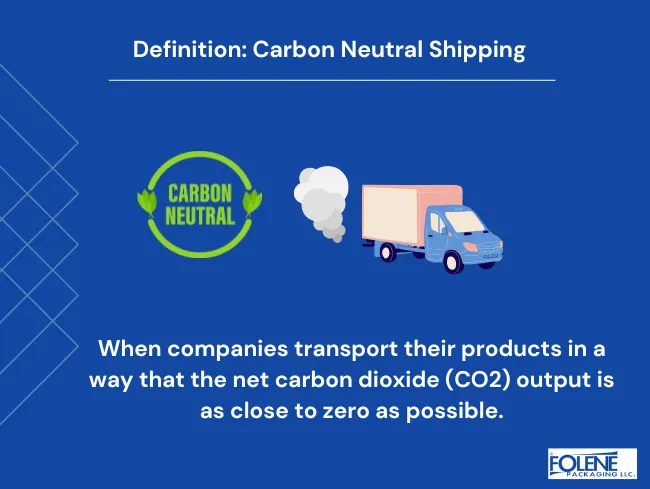
What is Carbon Neutral Shipping?
Carbon-neutral shipping occurs when companies transport their products in such a way that the net carbon dioxide (CO2) output is as close to zero as possible. Packing and shipping products without creating carbon dioxide is impossible, so we do our best to produce less carbon dioxide, certainly not to increase future carbon emissions, and we “offset” or “neutralize” existing emissions. (The net carbon output is the CO2 emission that remains after CO2 is released into the atmosphere and removed by various means. When the amount of carbon that remains and the carbon that is removed are equal, there is a remaining balance of zero. This is known as a zero carbon footprint.)
Carbon-neutral shipping is the result of joint efforts in CO2 emission reduction. Different stakeholders work together to compensate for the carbon emitted through production and transportation (especially after CO2 emission is reduced) and carbon offsetting (such as by helping pay towards creating natural carbon sinks).
By enabling carbon-neutral shipping, businesses damage the environment less and minimize carbon dioxide emissions. Climate-neutral businesses reduce emissions to zero and eliminate all of their other negative environmental impacts. Carbon negative businesses exceed carbon neutrality—they eliminate more CO2 than they emit. (Microsoft announced that it will be carbon-negative by 2030.) Since this requires a great investment, not everyone is going to be doing that!
Why is Carbon Neutral Shipping Important for the Environment?
A large part of business involves ordering raw materials from distant locations, either because it is cheaper or because there are more options available. That means raw materials and finished products are shipped all over the world. By choosing eco-friendly shipping methods, suppliers avoid being carbon positive (producing a positive carbon footprint), help protect their surroundings, and keep global carbon dioxide emissions low.
Are We Seeing More Carbon Neutral Shipping?
While becoming carbon neutral can be challenging and requires professional support and monetary expense, carbon-neutral shipping is within the reach of regular suppliers. We are seeing more large companies adopting carbon neutral shipping. We are also seeing smaller companies beginning to offer carbon neutral shipping to customers and embracing optimized shipping strategies.
It takes time and effort for companies to become carbon neutral. It means changing the way the entire business empire works, and substantial financial investments are involved. Retail giants such as Amazon and Microsoft have promised to become carbon neutral in the future, along with 23% of other businesses approached that have committed to becoming carbon neutral by the year 2030.
4 Benefits That Carbon Neutral Shipping Drives for Suppliers
Companies are implementing carbon neutral shipping because it can be profitable and is not overly difficult to set rolling.
Carbon neutral shipping offers suppliers several business-related benefits:
1. Carbon neutral shipping can reduce shipping costs by increasing efficiency.
Suppliers avoid wasteful shipping emissions by batching shipments, shipping locally, and using lower-emission methods of transport such as shipping by sea and reducing the shipping distance of raw materials by getting raw materials from a closer source.
2. Carbon neutral shipping does not need to cost you more.
Does carbon neutral shipping cost a business money? Some parts do, but research shows that more than half of consumers are willing to neutralize additional costs associated with eco friendly shipping and packaging. For example, 57% of people asked don’t mind paying 10% more for eco-friendly shipping and packaging.
3. Adopting carbon neutral shipping can attract business.
Showing your commitment to planet protection talks to today’s consumers who are concerned about protecting the environment. 62% of consumers feel “very strongly” that air pollution must be remedied, says the WSJ. By adopting carbon neutral shipping, companies align their brand values with customers’ values, increasing customer loyalty.
4. Having a carbon neutral shipping plan can reduce errors, expenses and losses.
Once you have a carbon offset strategy in place for your shipping, your company’s awareness will increase. Stakeholders on all levels will improve how they make and fill orders, being careful to avoid unnecessary returns.
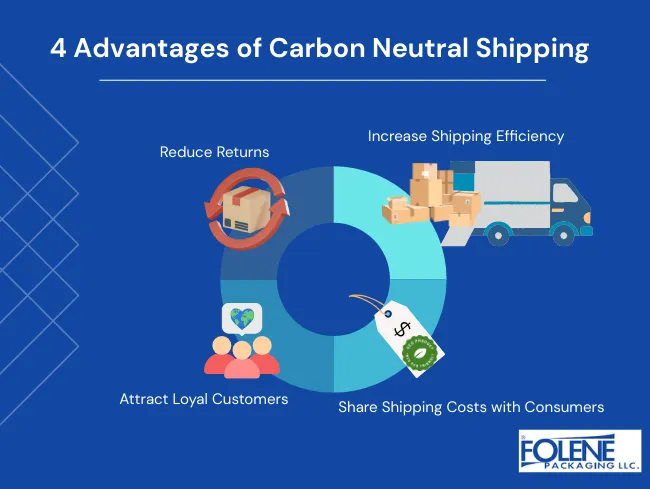
5 Ways To Shift Towards Carbon Neutral Shipping
Since we are discussing shipping, this is the place to mention that aside from a phased carbon offset plan, suppliers can actively reduce carbon emissions by making shipping decisions that improve the company’s shipping carbon emissions. These are strategies that neutralize the CO2 emissions from shipping. They support and enable carbon neutral shipping.
Here are some carbon offset supplier-friendly ideas for reducing emissions during the shipping process:
Optimize shipping routes for your raw materials and finished products to reduce fuel consumption and lower overall carbon emissions. Use route optimization software to find the most efficient routes.
Consider using alternative modes of transportation, such as rail or sea because they release less carbon than air freight.
Implement a hub-and-spoke supply model with centralized warehousing to reduce transportation needs and the resulting carbon emissions produced.
Investigate supply sources for raw materials. If your entire supply chain is local, transportation expenses can be cut a lot.
Combine international and local aspects of your supply chain to save on shipping costs and the demand for energy.
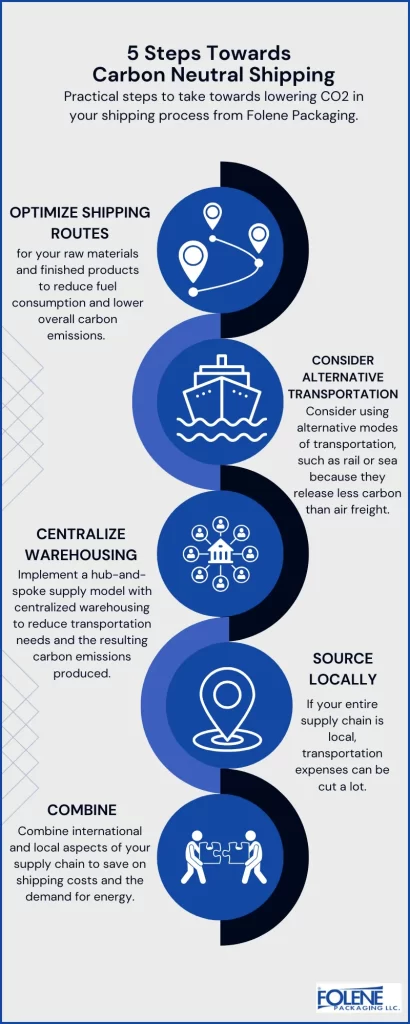
Making Carbon Offset Shipping Plan in 6 Steps
Implementing carbon offset shipping requires a commitment to reducing carbon emissions and investing in long-term offsetting projects. Since suppliers are one link in the supply chain, they usually need to consult with qualified professionals for environmental projects to build a phased implementation plan.
Here is an outline for a carbon offset plan:
Calculate your company’s total carbon footprint from shipping. Use a carbon offset calculator.
Measure how much carbon emissions your company needs to reduce to offset the carbon footprint and reach carbon neutrality.
Develop a carbon offset shipping policy that outlines your targets and methods for offsetting carbon emissions.
Reduce carbon emissions wherever possible with targeted carbon neutral shipping options (such as by optimizing packaging and using lightweight shipping strategies)
Offset unavoidable carbon emissions by supporting and contributing to decarbonization projects (such as the creation of carbon sinks, buying carbon offsets (also known as carbon credits), and carbon capture programs)
Monitor and report on your company’s progress towards offsetting carbon emissions to regulatory bodies, stakeholders, and customers.
Many firms find that partnering with a carbon offset provider can simplify the process and reduce expenses of carbon neutral delivery.
How The Flxtite® and Ecolene® Films Reflect Carbon Neutral Shipping Practices
Folene Packaging embraces carbon-neutral shipping practices. Our concise deliveries of raw materials come from Europe, rather than the Far East. This helps us avoid huge amounts of carbon emissions and bring the prices of our raw materials down so that we can pass the savings on to you.
The top-grade shrink film Folene Packaging produces is processed and made customer-ready locally in the States. This not only helps suppliers and retailers package their products in the most optimal space-saving and lightweight way, but we can also ship products immediately with a mere two-day turnaround to fulfillment time. Of course, the finished product takes more space than the raw product, and we are pleased that the finished product is ready to be shipped to our clients in a carbon-optimal way. It is not flown into you from thousands of miles away.
Learn more about Folene Packaging’s high-quality shrink films to reduce reliance on international parts of the supply chain and move towards carbon neutral shipping.
Carbon Neutral Shipping FAQs
What is a carbon sink?
A carbon sink is a natural or artificial arrangement that absorbs more carbon from the atmosphere than it releases. Plants, forests, the ocean and natural soil are examples of natural carbon sinks.
What does carbon neutral mean?
Carbon neutral definition: Being carbon neutral mean making a zero net release of CO2. We do this through offsetting emissions such as by planting new trees, setting up artificial carbon sinks and carbon capture.
